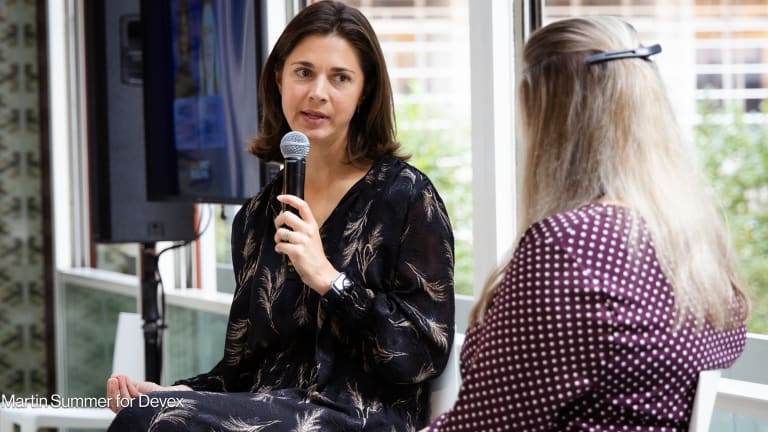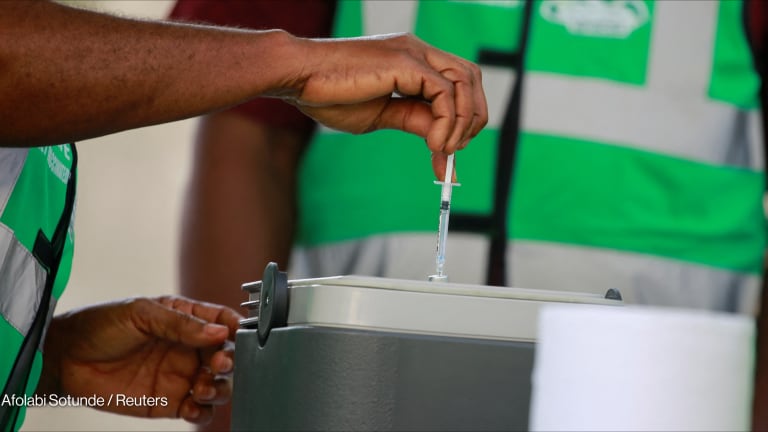How governments can turn digital health analytics into action
The right conditions need to be in place for artificial intelligence, machine learning, and advanced analytics to realize their full potential in pandemic preparedness and response.
Machine learning-based models have informed many national responses to the COVID-19 pandemic. But the right conditions must be in place for artificial intelligence, machine learning, and advanced analytics to realize their full potential in pandemic preparedness and response — particularly in low- and middle-income country contexts. So how can governments and their partners translate more of these models into policy? Marelize Gorgens, digital health lead at the World Bank, shared her thoughts on this last week at an event hosted by the Center for Global Development. “If you asked me before the advent of COVID-19 what are the important things to keep in mind to translate analytics into policy action, I would have said three lessons we’ve learned are essential,” she said. “The first is to have the capacity in government to take a policy challenge, formulate a research or analytics question, and translate the results of an analytics process into policies and programs,” she explained. “It’s part art and part science,” she said. “But without a champion in the government or capacity in the government, it's difficult to ensure uptake.” The second lesson is the importance of early engagement by tech companies, donors, and implementing partners — “involving governments early on and in an active way,” rather than doing modeling and analytics work and providing governments with answers months later, Gorgens said. The third lesson is to ensure clearly defined metrics capture how these analytics inform action. “With so much new data available every day, if we’re too late, the ability to influence policy and practice is significantly diminished.” --— Marelize Gorgens, digital health lead, World Bank “When we commission analytical work, our most successful work is where there are clear metrics to define not just what the policy question is that we are trying to provide insights into, but what are the metrics of what success looks like?” she said. And new lessons have emerged as the World Bank has worked with governments to use modeling in the context of COVID-19 to help them understand their vulnerability to the virus and design their response, Gorgens said. Analytics efforts are bookended by two processes. On the front end, when collecting, cleaning, and curating data; and on the back end, when translating the findings into policies and practice. Gorgens said she and her team have learned “how long it takes, and the amount of effort that’s involved, between the output of the analytics effort and the actual uptake of that analytics effort into policy and practice on the back end — and on the front end, the amount of time it takes to get data, to get accurate data, to get permission to use that data, and to learn that data.” Often, the analytic results come too late; for example, once countries got access to data on their vulnerability to COVID-19, the health and socioeconomic threats of the virus may have changed, and the data would no longer be useful. “With so much new data available every day, if we’re too late, the ability to influence policy and practice is significantly diminished,” Gorgens said. Working with countries to use insights from machine learning-based models over the course of the pandemic has taught Gorgens new lessons about how to translate analytics into policy action, she added. Now, Gorgens would add the need for data systems, governance, and institutions that allow governments to act on real-time data, the importance of community trust, and the benefits of building early and being ready, while also delivering quick wins. It shouldn’t take a crisis for the global health community to implement innovations, she added. “We are working hard to make sure some of the innovations we’ve seen come to the fore during COVID-19 don’t fizzle out as the world transitions to a post-COVID world, but that we build those innovations and scale them to national and global implementation,” Gorgens said. And while it’s important to build for the future, countries also need access to simple dashboards that help them visualize what to do today, she said.
Machine learning-based models have informed many national responses to the COVID-19 pandemic. But the right conditions must be in place for artificial intelligence, machine learning, and advanced analytics to realize their full potential in pandemic preparedness and response — particularly in low- and middle-income country contexts.
So how can governments and their partners translate more of these models into policy?
Marelize Gorgens, digital health lead at the World Bank, shared her thoughts on this last week at an event hosted by the Center for Global Development.
This story is forDevex Promembers
Unlock this story now with a 15-day free trial of Devex Pro.
With a Devex Pro subscription you'll get access to deeper analysis and exclusive insights from our reporters and analysts.
Start my free trialRequest a group subscription Printing articles to share with others is a breach of our terms and conditions and copyright policy. Please use the sharing options on the left side of the article. Devex Pro members may share up to 10 articles per month using the Pro share tool ( ).
Catherine Cheney is the Senior Editor for Special Coverage at Devex. She leads the editorial vision of Devex’s news events and editorial coverage of key moments on the global development calendar. Catherine joined Devex as a reporter, focusing on technology and innovation in making progress on the Sustainable Development Goals. Prior to joining Devex, Catherine earned her bachelor’s and master’s degrees from Yale University, and worked as a web producer for POLITICO, a reporter for World Politics Review, and special projects editor at NationSwell. She has reported domestically and internationally for outlets including The Atlantic and the Washington Post. Catherine also works for the Solutions Journalism Network, a non profit organization that supports journalists and news organizations to report on responses to problems.








